 |
 |
 |
 |
The Gate to Africa Exercise Programme: Morocco–Spain Joint Tabletop and Field Exercises on Maritime Security of Radioactive Material in Transport
English ¦ STI/PUB/1886 ¦ 45 pages ¦ Date published: 2020
In May 2012, Morocco, Spain and the IAEA jointly organized a technical seminar on the risk of nuclear terrorism. This led to the adoption of a Joint Action Plan that provided an adequate framework for conducting exercises for nuclear security events and radiological emergencies. The Gate to Africa exercise programme on transport security is an implementation of the Joint Action Plan.
|
This publication summarizes the Gate to Africa exercise programme and describes the scenarios utilized. It also lists the lessons learned and findings from the exercises. As such, this publication is intended to assist other Member States interested in implementing their own transport security exercises.
|
 |
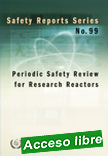 |
Periodic Safety Review for Research Reactors
English ¦ STI/PUB/1886 ¦ 45 pages ¦ Date published: 2020
In May 2012, Morocco, Spain and the IAEA jointly organized a technical seminar on the risk of nuclear terrorism. This led to the adoption of a Joint Action Plan that provided an adequate framework for conducting exercises for nuclear security events and radiological emergencies. The Gate to Africa exercise programme on transport security is an implementation of the Joint Action Plan. This publication summarizes the Gate to Africa exercise programme and describes the scenarios utilized.
|
It also lists the lessons learned and findings from the exercises. As such, this publication is intended to assist other Member States interested in implementing their own transport security exercises.
|
 |
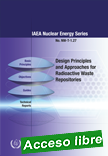 |
Design Principles and Approaches for Radioactive Waste Repositories
IAEA Nuclear Energy Series NW-T-1.27 ¦ English ¦ STI/PUB/1908 ¦ 75 pages ¦ Date published: 2020
A considerable level of international experience has been gained over the last decades in designing radioactive waste disposal facilities. This publication is intended to assist Member States in planning for the disposal of radioactive waste. Specifically, this publication describes the approaches and principles to be considered by the responsible organizations within a Member State involved in the planning and design of radioactive waste disposal facilities.
|
Examples are provided for all waste classes requiring disposal. The examples are based on successfully implemented designs or on design concepts that are sufficiently advanced to demonstrate their overall feasibility for the safe disposal of radioactive waste. Alternate disposal options are also discussed, describing solutions that rely on the conversion of existing facilities, such as mines or other underground openings as well as the potential for disposal in boreholes.
|
 |
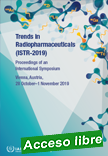 |
Trends in Radiopharmaceuticals (ISTR-2019) - Proceedings of an International Symposium Held in Vienna, Austria, 28 October–1 November 2019
English ¦ STI/PUB/1913 ¦ 34 pages ¦ Date published: 2020
The use of radiopharmaceuticals is an important tool not only for management of diseases and dysfunctions, but also for better understanding human diseases and developing effective treatment options, such as in the case of neurology. In this context, there is concern of continuous, impressive progress in nuclear medicine which is linked to the development of new radiopharmaceuticals and efficient production of relevant radioisotopes.
|
These proceedings highlight the main findings and developments discussed during the International Symposium on Trends in Radiopharmaceuticals. They cover the key issues and advances in the field of radiopharmaceuticals from development, production, and use of diagnostic, therapeutic, and theranostic radioisotopes and radiopharmaceuticals, as well as regulatory and licensing issues related to their production. Additional topics addressed were education, certification and training methodologies. A supplementary file contains the detailed programme of the symposium and the abstracts of all oral and poster presentations.
|
 |
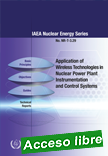 |
Application of Wireless Technologies in Nuclear Power Plant Instrumentation and Control Systems
IAEA Nuclear Energy Series NR-T-3.29 ¦ English ¦ STI/PUB/1869 ¦ 104 pages ¦ Date published: 2020
This publication summarizes the results of an IAEA coordinated research project on the application of wireless technologies in the nuclear industry. It provides an overview of the current knowledge, existing practices, operating experiences and benefits and challenges related to the use of the technology in instrumentation and control systems of nuclear facilities.
|
The research areas covered were codes, standards and regulatory guides; wireless technologies for nuclear applications; practices, experience, lessons learned; potential wireless applications; and emerging technologies and challenges. The main part of the publication contains information derived from the results achieved in each research area. The annexes include supporting information and selected details of the research work that was performed. The information provided in this publication supports Member States' capabilities in the design, development, implementation, operation and, as necessary, licensing of wireless technologies in the nuclear industry.
|
 |
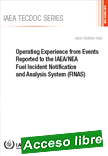 |
Operating Experience from Events Reported to the IAEA/NEA Fuel Incident Notification and Analysis System (FINAS)
IAEA TECDOC No. 1932 ¦ English ¦ 70 pages ¦ Date published: 2020
The Fuel Incident Notification and Analysis System (FINAS) is jointly operated by the International Atomic Energy Agency (IAEA) and the Nuclear Energy Agency of the Organization for Economic Co-operation and Development (OECD/NEA). The system is an important tool for international exchange of operating experience from nuclear fuel cycle facilities.
|
FINAS reports contain information about events of safety significance that have occurred at nuclear fuel cycle facilities and describe the root causes and lessons learned from the events. This publication provides a summary of the operating experience feedback from the events reported to FINAS since it was launched in 1992. The publication has a focus on the root causes, lessons identified, and corrective actions taken to prevent the occurrence of similar events. Reference to other publications that cover nuclear fuel cycle facilities’ events as well as a description of the operating experience programmes of these facilities is included. The publication is intended to be used by nuclear fuel cycle facilities’ operators, regulators, and designers.
|
 |
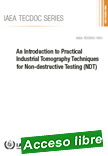 |
An Introduction to Practical Industrial Tomography Techniques for Non-destructive Testing (NDT)
English ¦ IAEA-TECDOC-1931 ¦ 88 pages ¦ Date published: 2020
Industrial computed tomography for advanced industrial non-destructive evaluation is a complex technological area, encompassing nuclear radiation detectors, mechanical engineering, computational mathematics and radiation physics. Additionally, the cost of applying this technology may be prohibitive. This guidebook provides an introduction to gamma computed tomography for non-destructive evaluation imaging in the simplest configuration.
|
. It is intended to be of use to the non-destructive testing community, currently practicing conventional radiography techniques. It provides clear information on the relevant practical issues and problems related to setting up computed tomography for industrial non-destructive testing and establishes a basis for understanding the intricacies of the technology.
|
 |
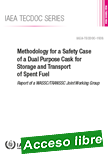 |
Methodology for a Safety Case of a Dual Purpose Cask for Storage and Transport of Spent Fuel - Report of a WASSC/TRANSSC Joint Working Group
English ¦ IAEA-TECDOC-1938 ¦ 118 pages ¦ Date published: 2020
Spent nuclear fuel which is generated in the operation of nuclear reactors needs to be safely managed following its removal from the reactor core. On-site power reactor storage pools were designed on the assumption that after a short period of time spent nuclear fuel would be removed for reprocessing and disposal or further storage elsewhere.
|
The amount of highly radioactive spent fuel that needs to be stored over longer periods of time is growing and additional storage capacity is required. One of the widely used options for additional storage capacity is the use of casks for dry storage of spent fuel. Among various existing dry storage concepts, several Member States are utilizing a concept of dual purpose casks (DPCs). This publication provides practical advice on the structure and contents of a DPC integrated safety case with reference to existing IAEA requirements relevant to the licensing and use of transport and storage casks for spent fuel.
|
 |
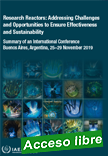 |
Research Reactors: Addressing Challenges and Opportunities to Ensure Effectiveness and Sustainability - Summary of an International Conference Held in Buenos Aires, Argentina, 25–29 November 2019
Proceedings Series ¦ English STI/PUB/1927 ¦ 64 pages ¦ Date published: 2020
The International Conference on Research Reactors, held every four years, is one of the IAEA activities supporting countries in addressing the opportunities and challenges related to research reactor programmes.
|
This publication presents a summary and other material from the 2019 conference. The main challenges the research reactor community is facing include the need to ensure regulatory effectiveness, manage the ageing of the facilities, ensure knowledge transfer, and improve utilization programmes and strategic planning. This conference provided a forum for reactor operators, managers, users, regulators, designers and suppliers to exchange best practices and learn from each other, particularly in addressing common issues, challenges and strategies. This resulted in a publication which provides a summary of the conference, the major findings and conclusions of the sessions, and the opening and closing addresses. The accompanying online files include the individual technical papers and presentations.
|
 |
 |
Uranium Raw Material for the Nuclear Fuel Cycle: Exploration, Mining, Production, Supply and Demand, Economics and Environmental Issues (URAM-2018) - Proceedings of an International Symposium Held in Vienna, Austria, 25–29 June 2018
English ¦ STI/PUB/1925 ¦ 90 pages ¦ Date published: 2020
In response to a challenging economic environment, the industry is currently seeking new and innovative ways to improve efficiencies in producing uranium. Continued interest in developing uranium resources in a safe and sustainable manner led to this symposium being convened.
|
This publication presents the proceedings. In continuation of the topics at previous symposia on uranium production and raw materials for the nuclear fuel cycle, the main focus was to analyse uranium supply/demand scenarios and to present and discuss new developments in uranium geology, exploration, mining, milling and processing, as well as environmental requirements for uranium operations and site decommissioning.
|
 |
| |
|
|

|
|
|
| |
|
|
| |
| |
|
|
| |
| |
|
|
| |
| |
|
|
|
| |
| |
